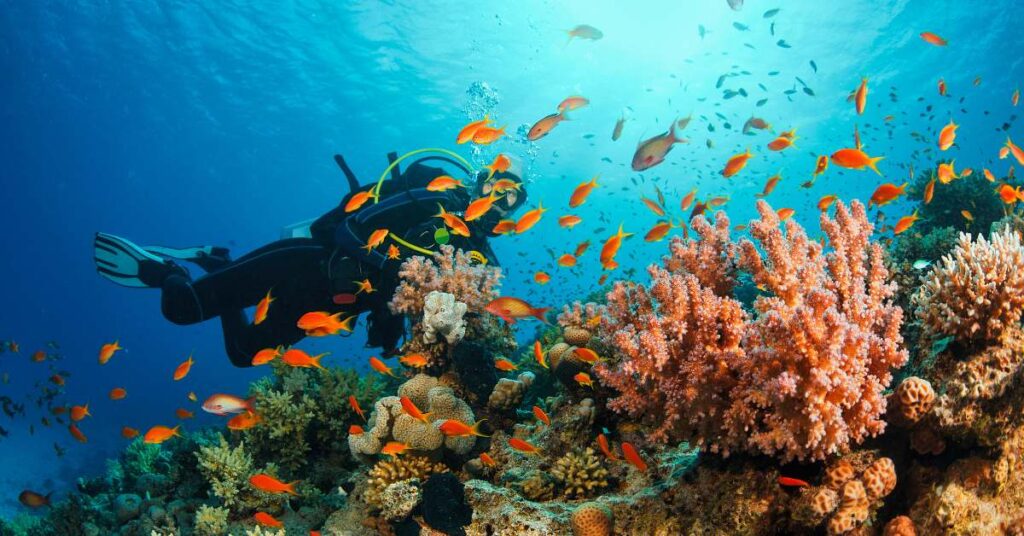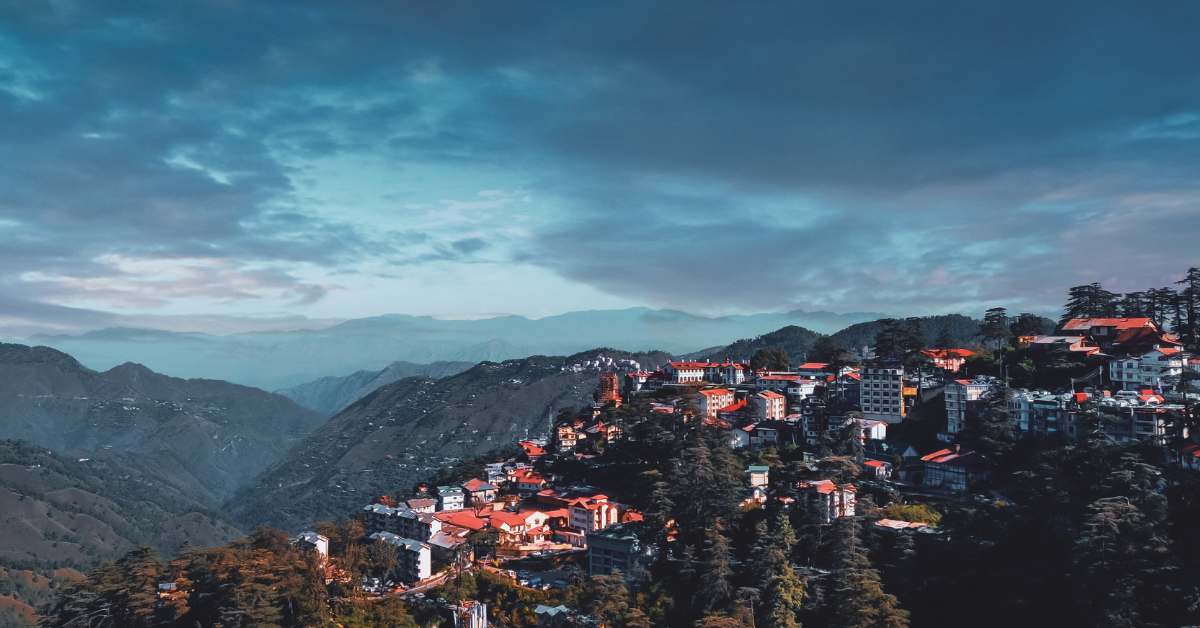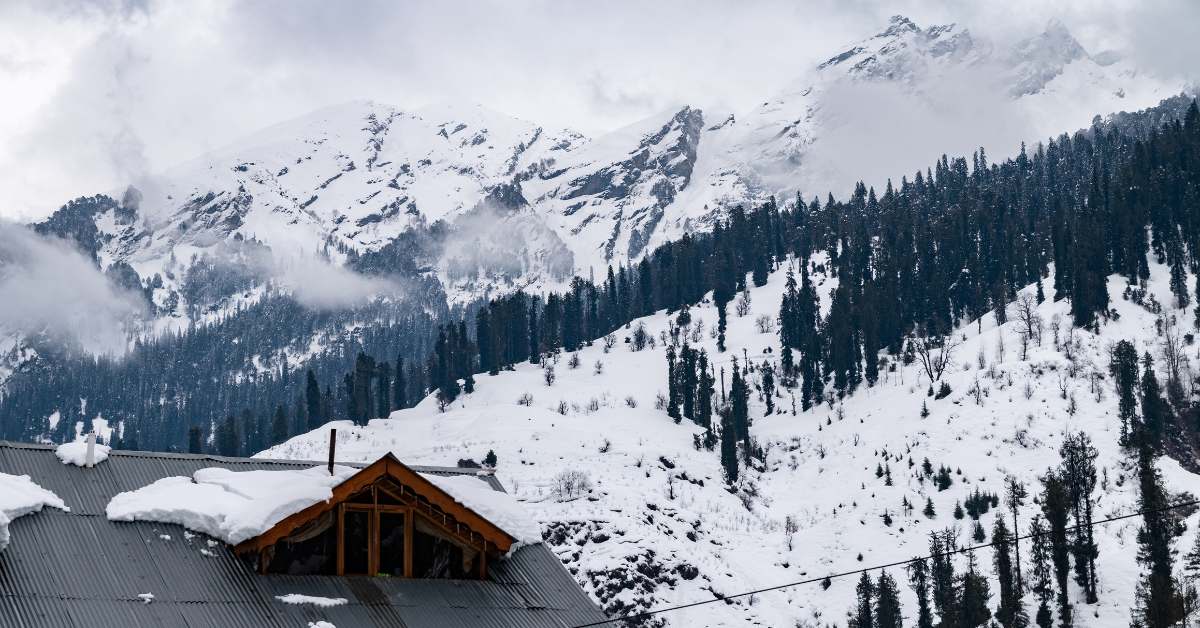In India, scuba enthusiasts from across the globe are drawn to various scuba diving spots by her extensive coastline and rich marine biodiversity. A number of diving experiences, ranging from Andaman and Nicobar’s untouched waters to Lakshadweep’s lively coral reefs, have been recorded in this country. This comprehensive guide provides insight into the best spots for scuba diving in India, discussing what makes each spot special and why it should be included in every diver’s list of must-visit places.
The 7 Best Scuba Diving Spots in India
For all the adventure seekers, here are the best scuba diving spots in India:
Andaman and Nicobar Islands
Havelock Island
Havelock Island is situated within the Andaman Archipelago. This island is a paradise for divers because of its clear waters and vibrant marine life. There are several well-known dive sites here:
Elephant Beach: It is renowned for its coral reefs and various marine species, such as sea turtles and moray eels.
The Wall: It is a steep undersea cliff that goes down to about 55 metres, where visitors can see reef sharks and barracudas.
Dixon’s Pinnacle: It is famous for its sunken pinnacles full of schools of fish like barracudas, trevallies, and sometimes manta rays.
Neil Island
The quieter Havelock counterpart, Neil Island, has tranquil dive sites that are less crowded.
Bharatpur Beach: It has shallow waters with many coral gardens, hence making it suitable for beginners.
Margherita’s Mischief: Dugongs as well as sea snakes are usually present because the site is known for having sand at the bottom and coral formations on top.
North Bay Island
North Bay is near Port Blair, offering easily accessible locations for diving with vivid corals and plenty of marine life.
Coral Safari: Here you will find both soft and hard corals, which play host to lionfish and scorpionfish, not to mention colourful reef fish.
Lakshadweep Islands
Agatti Island
One of the popular diving destinations in India is Agatti Island, which has clear lagoons and coral reefs.
Agatti Wall: An amazing dive site with a coral garden and turtles swimming along you, while at times there are dolphins to be seen.
Coral Garden: This spot is famous for its vast stretches of corals and schools of colourful fish.
Bangaram Island
Some of the finest preserved coral reefs in India are found in Bangaram, a place that gives solitude and serenity during dives.
Manta Point: As suggested by the name, it’s all about manta rays plus other types of marine life.
Shark Point: It is named because this site frequently offers sights of sharks, especially reef sharks, as well as nurse sharks too.
Kadmat Island
Kadmat is an attraction for novice divers as well as experienced ones as there are different options for dives:
Jack Point: Coral bommies dominate this site, coupled with jacks and trevallies.
The Tunnel: The Tunnel is a unique dive site featuring a natural underwater tunnel and a variety of marine life.
Goa
Grande Island
This is one of the most favourite diving places in Goa and provides easy access to a great experience.
Sujan Singh Reef: Mostly beginner divers go here due to lots of colourful corals and fish schooling in groups at this particular spot.
Sail Rock: deeper than other sites covered earlier, where it’s possible to see rock formations with moray eels, barracudas, or sometimes reef sharks.
Netrani Island
Netrani, also known as Pigeon Island, lies off the coast of Karnataka but can be reached through Goa. It has great conditions for diving.
The Abyss: It’s a deep dive characterised by clear waters filled with marine life such as Napoleon wrasse and tuna, not forgetting reef sharks.
The Nursery: Suitable for novices, this site features shallow waters teeming with coral gardens and small reef fish.
Pondicherry (Puducherry)
Pondicherry, on the eastern coast of India, offers unique underwater experiences with its diverse aquatic life and man-made reefs.
Temple Reef: A reef made from recycled materials has many types of marine species, like lionfish, angelfish, and butterflyfish.
4 Corners: Known for its rocky outcrops and regular sightings of stingrays, eels, and other reef fish.
The Hole: It is a challenging dive with a sandy bottom and large boulders that are frequently inhabited by groupers and snappers.
Tarkarli, Maharashtra
Tarkarli is currently becoming a hot diving spot due to its clear water and coral reefs located in Maharashtra.
Sindhudurg Fort: This historic fort’s underwater territory is also richly populated with marine creatures such as colourful corals and various fish.
Vengurla Rocks: It is famous for its rocky underwater terrain where schools of fish can be found flocking together, offering an incredible diving experience.
Kovalam, Kerala
Kovalam, which is a well-known beach destination in Kerala, is also famous for diving sites.
The Lighthouse: On this site, there are rocky bottoms mixed up with sandy ones where you can see groupers or lionfish. Occasionally, shark reef sharks are seen, sometimes at night too.
Vizhinjam Rock: It is well known for its vibrant marine life, including turtles and moray eels, which exist among the underwater rock formations there.
Rameswaram, Tamil Nadu
Rameswaram has abundant biodiversity as well as historical significance related to diving activities in Tamil Nadu.
Pamban Island: With clear waters full of coral reefs that allow seeing different types of reef fish, often accompanied by dolphins in some cases, thus popularising the place.
Dhanushkodi: A graveyard of sunken ships provides a unique diving experience and is enriched with rich historical backgrounds.
Diving tips and best practices
Here are some tips and practices to follow while scuba diving:.
Choosing the Right Dive Operator
Make sure that the dive operator has a certification from reputable organisations such as PADI or SSI. Check out reviews to ensure they are following safety procedures.
The Best Time to Dive
The best time to go diving in India is between October and May, since at this time there is a calm sea, less wind, and thus good visibility. Avoid monsoon seasons because they can affect your diving conditions, and therefore no dives should be done during this period.
Environmental Conservation
Avoid touching corals, use buoyancy control, and do not disturb marine life while diving responsibly. Support eco-friendly dive operators besides participating in local conservation initiatives.
Health and safety
Only dive when you are medically fit. Always stay within your limitations for your level of certification, and don’t forget about the buddy system. Listen attentively to the pre-dive instructions given and follow safety rules strictly.
Final Words
India’s vast and vibrant marine life brings a range of experiences for all levels of divers. Wherever you are on these magnificent islands, whether it is the Andaman Nicobar Islands far from everywhere else, Lakshadweep lagoons unspoiled by civilisation, or Goa or Pondicherry just opening up for divers, each location offers an amazing insight into an underwater universe unlike any other. By selecting certified dive operators as well as responsible diving practices, you can have fun while keeping safe during your trip while contributing towards protecting these precious marine ecosystems. So, get ready and take the plunge! Explore the wondrous world beneath the waves in India!
For more travel guides and details, keep visiting Trip Trek Tales.
Hello I am Jyoti, I have been a constant travel writer for Trip Trek Tales. I love travelling and therefore, I wanted to contribute in this field. Travelling, writing and reading are the things that I love the most and this is the main reason why I started my career in writing.
At Trip Trek Tales, I am sharing the best information related to the field of travelling. All the information in the articles are after thorough research, personal experiences and knowledge. Hope you love my writings. Thank you. Have a happy travel!



